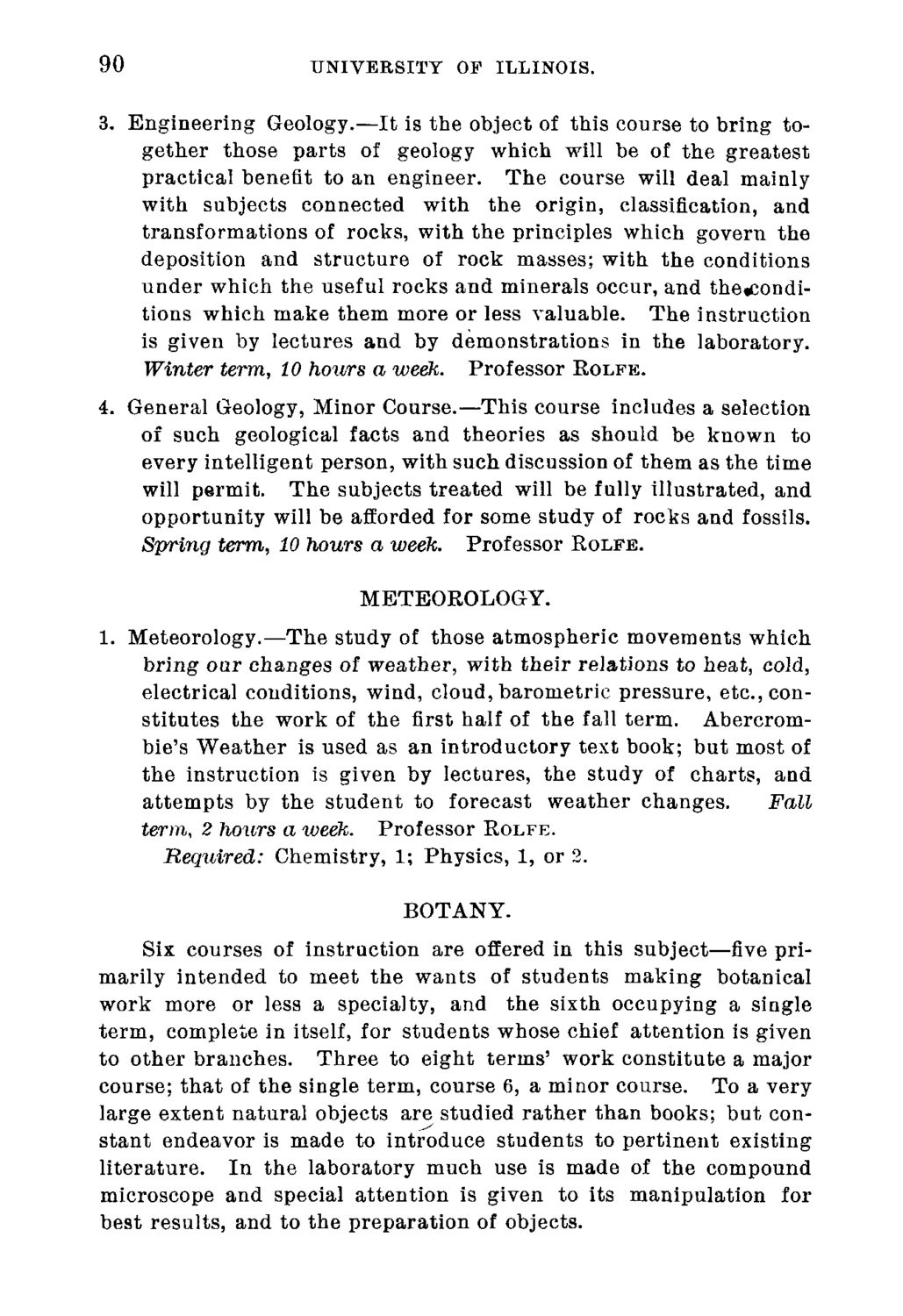| |
| |
Caption: Course Catalog - 1891-1892
This is a reduced-resolution page image for fast online browsing.

EXTRACTED TEXT FROM PAGE:
90 UNIVERSITY OF ILLINOIS. 3. Engineering Geology.—It is the object of this course to bring together those parts of geology which will be of the greatest practical benefit to an engineer. The course will deal mainly with subjects connected with the origin, classification, and transformations of rocks, with the principles which govern the deposition and structure of rock masses; with the conditions under which the useful rocks and minerals occur, and the^onditions which make them more or less valuable. The instruction is given by lectures and by demonstrations in the laboratory. Winter term, 10 hours a week. Professor ROLFE. 4. General Geology, Minor Course.—This course includes a selection of such geological facts and theories as should be known to every intelligent person, with such discussion of them as the time will permit. The subjects treated will be fully illustrated, and opportunity will be afforded for some study of rocks and fossils. Spring term, 10 hours a week. Professor ROLFE. METEOROLOGY. 1. Meteorology.—The study of those atmospheric movements which bring our changes of weather, with their relations to heat, cold, electrical conditions, wind, cloud, barometric pressure, etc., constitutes the work of the first half of the fall term. Abercrombie's Weather is used as an introductory text book; but most of the instruction is given by lectures, the study of charts, and attempts by the student to forecast weather changes. Fall term, 2 hours a week. Professor ROLFE. Required: Chemistry, 1; Physics, 1, or 2. BOTANY. Six courses of instruction are offered in this subject—five primarily intended to meet the wants of students making botanical work more or less a specialty, and the sixth occupying a single term, complete in itself, for students whose chief attention is given to other branches. Three to eight terms' work constitute a major course; that of the single term, course 6, a minor course. To a very large extent natural objects are studied rather than books; but constant endeavor is made to introduce students to pertinent existing literature. In the laboratory much use is made of the compound microscope and special attention is given to Its manipulation for be9t results, and to the preparation of objects.
| |